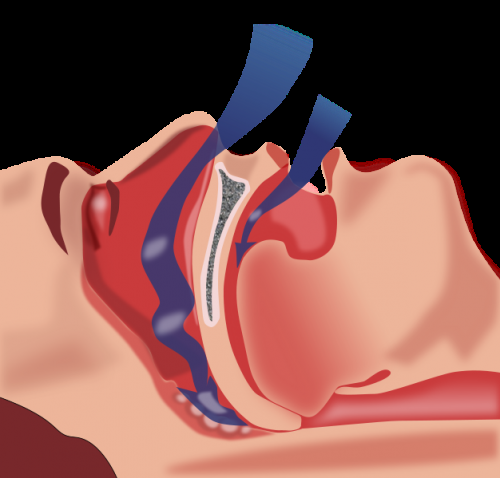Risk of motor vehicle accidents is higher in people with sleep apnea

A new study finds that obstructive sleep apnea is associated with a significantly increased risk of motor vehicle accidents, and this risk is reduced when sleep apnea is treated effectively using continuous positive airway pressure (CPAP) therapy.
Results show that patients with sleep apnea were nearly 2.5 times more likely to be the driver in a motor vehicle accident, compared with a control group of other drivers in the general population. Further risk analysis found that severe excessive daytime sleepiness, a short sleep duration of 5 hours or less, and use of sleeping pills were independent predictors of increased crash risk in patients with sleep apnea. The study also found that the incidence of motor vehicle accidents was reduced by 70 percent among sleep apnea patients who used CPAP therapy for an average of at least 4 hours per night.
"This study provides very strong evidence that obstructive sleep apnea patients have an increased traffic accident risk and that this risk can be modified if CPAP treatment is used adequately," said principal investigator and senior author Dr. Ludger Grote, associate professor at the Center for Sleep and Vigilance Disorders at the Sahlgrenska Academy at the University of Gothenburg in Gothenburg, Sweden.
Study results are published in the March issue of the journal Sleep.
"Excessive daytime sleepiness is a common symptom of obstructive sleep apnea, which can cause you to awaken in the morning feeling tired and unrefreshed despite a full night of sleep," said American Academy of Sleep Medicine President Dr. Timothy Morgenthaler. "Effective identification and treatment of sleep apnea is essential to reduce avoidable, life-threatening accidents caused by drowsy driving."
The AASM reports that obstructive sleep apnea (OSA) is a common sleep disease afflicting at least 25 million adults in the U.S. Sleep apnea warning signs include snoring and choking, gasping or silent breathing pauses during sleep. The AASM and other partners in the National Healthy Sleep Awareness Project, which is funded by the Centers for Disease Control and Prevention, urge anyone with symptoms of sleep apnea to visit http://www.stopsnoringpledge.org to pledge to "Stop the Snore" by talking to a doctor.
Led by Grote and lead author Mahssa Karimi, PhD, the research team studied 1,478 sleep apnea patients with a mean age of 54 years. Seventy percent were men. Objective motor vehicle accident data were analyzed from the Swedish Traffic Accident Registry (STRADA). The control population of 635,786 driver's license holders included 21,118 individuals with a record of at least one motor vehicle accident during the study period. Sleep apnea patients were involved in 82 motor vehicle accidents while driving during the study period, including 56 accidents in the 5 years prior to diagnosis and 26 accidents in the 5 years after diagnosis. Objective CPAP adherence data were obtained from the device at follow-up visits.
The authors noted that the effect of OSA on motor vehicle accident frequency may be even higher in other countries. The AAA Foundation for Traffic Safety estimates that drowsy driving may cause 328,000 motor vehicle accidents and 6,400 fatal crashes on U.S. roads each year.
More information: "Sleep Apnea Related Risk of Motor Vehicle Accidents is Reduced Positive Airway Pressure: Swedish Traffic Accident Registry Data," www.journalsleep.org/ViewAbstract.aspx?pid=29894
"Who Needs Sleep Apnea Treatment for Safety Critical Tasks—Are We There Yet?" www.journalsleep.org/ViewAbstract.aspx?pid=29890

















